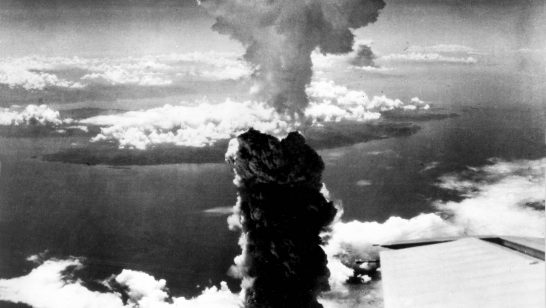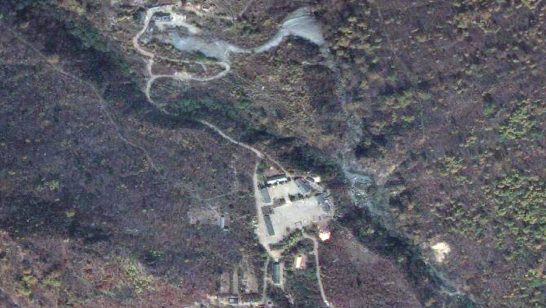
The Non-Proliferation Treaty (NPT) regime is in crisis. The heart of the problem is the failure of the nuclear-armed states parties to eliminate their nuclear weapons, which they are legally obligated to do under article VI of the Treaty.
When adopted in 1968, the NPT was genuinely perceived and treated as a bargain by the vast majority of governments, which agreed to never acquire nuclear weapons if those countries possessing them would eliminate theirs. Thinking of the risks of the nuclear age and the consequences for their citizens and the world, these non-nuclear governments could perhaps not imagine the depths of bad faith of the nuclear-armed states, the extent to which the perceived “power” of the bomb could have corrupted their reason and rationality.
Other than North Korea, which withdrew from the NPT in 2003 and developed nuclear weapons, the non-nuclear-armed states parties have almost all abided by the Treaty’s non-proliferation rules. Yet the nuclear-armed states, while at times reducing the overall numbers of their arsenals, have never engaged in multilateral nuclear disarmament efforts with the goal of eliminating their arsenals. Instead, they have spent billions of dollars modernizing their nuclear weapons, delivery systems, and related infrastructure. They have written into their security doctrines new justifications for the use of nuclear weapons. Some, like the United States and Russia, are building new types of nuclear weapons, “upgrading” their delivery systems, and engaging in proxy conflicts with each other. They have failed to implement previously agreed actions and steps to nuclear disarmament, including from the 1995, 2000, and 2010 NPT Review Conferences.
Ever since NPT states parties agreed to the Treaty’s indefinite extension in 1995, the nuclear-armed states have acted as if this meant they had a “right” to the indefinite possession of nuclear weapons. This fallacy has, over time, cracked the NPT regime to its very core.
While the nuclear-armed states parties are ultimately responsible for this situation, they are not singularly responsible. Their policies and practices are protected by a handful of other states parties—those that consider themselves to be under the US “nuclear umbrella”. These countries, compromised of the members of the North Atlantic Treaty Organisation (NATO), together with Australia, Japan, and South Korea, argue that nuclear weapons are “necessary” to ensure their countries’ security and to preserve “international security”. In doing so, they have explicitly or tacitly defended the “right” of certain countries to possess nuclear weapons.
All of these countries, in acting deliberately against the pursuit and achievement of nuclear disarmament, are in violation of the NPT. But rather than adjust course, they instead accuse the Treaty’s non-nuclear-armed, non-nuclear-supportive states parties of undermining the NPT regime.
Last year, the vast majority of NPT states parties took action to implement their obligations under article VI of the Treaty to “pursue negotiations in good faith on effective measures relating to cessation of the nuclear arms race at an early date and to nuclear disarmament.” To this end, they negotiated the Treaty on the Prohibition of Nuclear Weapons (TPNW). This international agreement outlaws nuclear weapon possession, use, and development and provides options for nuclear-armed states to eliminate their nuclear weapon programmes in a verifiable and irreversible manner.
So far, the nuclear-armed states and their nuclear-supportive allies have rejected the TPNW, arguing that it undermines the NPT and international security. In an interpersonal situation, we have a term for this kind of psychological manipulation. It’s called gaslighting. It’s a deflection of reality and responsibility away from oneself and onto those that are challenging one’s power, privilege, or perception. The nuclear-armed states, and some of their nuclear weapon-supporting allies, have perfected this technique. But the non-nuclear-armed states of the NPT are finally standing up, together, and declaring that enough is enough.
Neither the TPNW, nor the states supporting it, have polarized the international community. But they have demarcated, in a clear, undeniable way, the polarization that already exists. The dichotomy is between those who view nuclear weapons as legitimate in the hands of some, and those that understand nuclear weapons to be catastrophic, immoral, and unjust. While some governments speak of the importance of “bridge building” between this divide, it’s imperative to question where this bridge should be built. Do those who support nuclear weapons really want those who have rejected nuclear weapons to acquire them and come over to “their side,” where nuclear weapons are seen as legitimate tools of security? Is this really what the governments of NATO or nuclear-armed states desire?
Healing the divide in the international community over nuclear weapons can only happen through systematic reduction and elimination of the means of massive nuclear violence, and the policies and practices that sustain those means. The TPNW has “filled the gap” for the prohibition of nuclear weapons; now states possessing or supporting these weapons must make considerable, concerted, and consistent efforts to eliminate them. This is the only answer to the NPT’s crisis of credibility, and to advancing the norms against the proliferation and possession of nuclear weapons.
Yet at the 2018 NPT Preparatory Committee (PrepCom) nuclear-armed states made no secret about their intentions to keep—and in some cases to update, expand, or modernize—their arsenals. The United Kingdom stated clearly that to abandon its nuclear deterrent unilaterally would undermine its security, and that of all states, and not make anyone safer. The United States utilized a variety of window-dressing exercises throughout the PrepCom to assure fellow states parties that the policies and intentions contained in its 2018 Nuclear Posture Review are in keeping with its NPT obligations, and defended the necessity of its weapons for global security. All nuclear-armed states parties used the “current security environment” as an excuse for retaining their nuclear weapons, a point refuted repeatedly by other states parties and even the International Committee of the Red Cross for its hollowness.
In addition to these fights, lack of progress in implementing the 1995 Resolution on the Middle East, which made the indefinite extension of the NPT possible, has also for many years eaten away at both the NPT’s credibility as well as trust among states parties. A US working paper created new dimensions of complexity around the unrealized Middle East weapons of mass destruction free zone by suggesting that the NPT does not need to be the primary mechanism for making progress on a zone. There was strong pushback to this by several other states parties, which view the working paper’s suggestion as a reinterpretation of, and backtracking on, the 1995 commitment.
On the final day of the PrepCom a large number of delegations took the floor to express dissatisfaction with the draft Chair’s factual summary for painting a distorted picture of the conference. This was particularly true of how the TPNW was reflected, in that an entire paragraph was allocated to the views of TPNW detractors, which were a minority in the conference—only a few states parties spoke against it. The paragraph about support expressed for the TPNW said that states had merely “noted” the “conclusion” of the TPNW, whereas actual language used employed adjectives such as “welcomed” and made reference to the TPNW’s adoption. The 2018 PrepCom was an opportunity for nuclear-armed states to engage seriously with the changing state of the world, the world in which nuclear weapons have been prohibited through a new treaty. Instead, they spouted vitriol at each other, told the TPNW-supporting states that they were ruining everything, and bemoaned the lack of the right “conditions” for nuclear disarmament.
In less than two years time, NPT states parties will hold its next five-yearly review of the Treaty’s implementation. At the last review conference, in 2015, the nuclear-armed states came equipped with nothing but a glossary of terminologies and a determination to dismiss efforts to investigate the humanitarian impacts of nuclear weapons or to make progress on nuclear disarmament. In 2020, these states will need to engage in concrete actions to end their modernization programs, remove nuclear weapons from their security doctrines, and commit to multilateral nuclear disarmament negotiations. The nuclear-supportive allies will likewise need to end nuclear sharing and eliminate nuclear weapons from their security doctrines. If they choose to continue their current path, they risk dismantling the very regime they claim to cherish.
The opinions articulated above also do not necessarily reflect the position of the European Leadership Network or any of its members. The ELN’s aim is to encourage debates that will help develop Europe’s capacity to address pressing foreign, defence, and security challenges.




